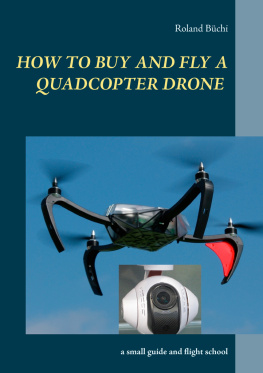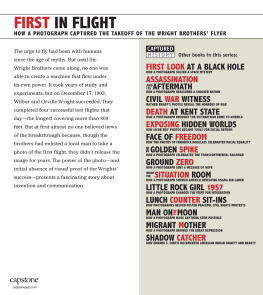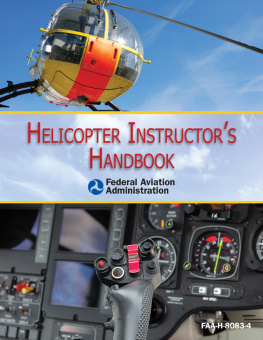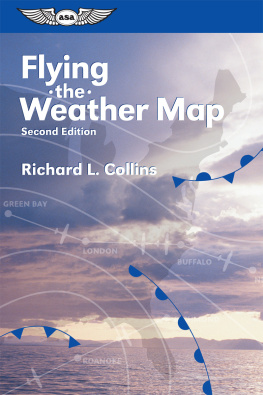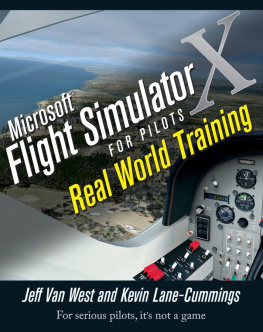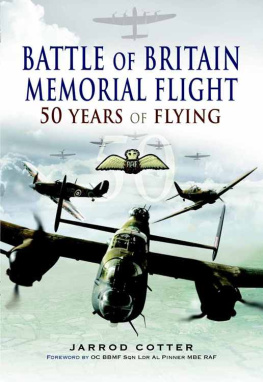Bibliografische Information der Deutschen Nationalbibliothek Die Deutsche Nationalbibliothek verzeichnet diese Publikation in der Deutschen Nationalbibliografie; detaillierte bibliografische Daten sind im Internet ber www.dnb.de abrufbar.
Figure 1: RTF- quadcopter.
At the beginning of the development of quadcopters in the early 2000s one had to buy all the components separately. At that time there were only a few complete systems. So you had to assemble the systems by yourself control electronics, brushless controllers, motors, propellers and frame. Then you had to download the appropriate software for the system. In those days, this kind of construction required a good level of technical knowledge about the function of each component.
But the ongoing development of the electronics in recent years means that quadcopters are today mainly purchased by users as complete systems and RTF (ready to fly). So today, for the pure fun of flying it is no longer absolutely necessary to understand the technology of these fascinating systems to the finest detail. And thats good because in this way quadcopter systems can be made accessible to many model pilots.
Often there are model pilots from other sectors, e.g. aircraft, helicopter, car or ship model builders, who simply buy and fly such aircraft out of curiosity. Or there are complete newbies who have never previously come into contact with flight models.
The ready to fly market goes hand in hand with a substantial price reduction. In the early years of development it was still necessary to pay about the same price for a quadcopter as for a large model helicopter, making many people think twice about whether they really want to start this hobby. Today, however, one sees quadcopters in all sizes and price ranges on the market. They start with the toy quadcopters, which are small and, despite their low price, often surprisingly robust, and finish with big quadcopters with several kilograms of weight and a payload to transport cameras for photo flight.
In this model division, a similar trend can be observed as with helicopter and airplane models. The smaller and cheaper systems are often built as ready to fly, while larger systems are often available as kits, with the possibility of software downloading and the installation of extensions, e.g. photo flight or GPS systems.
1.1 Indoors - outdoors
windless days and risk some test flights. From a propeller size of about 4 inches (=10 cm) the produced thrust is quite suitable for use outdoors and the quadcopter is also able to withstand light wind influence. Then it is also really interesting for outdoor flights undertaken with built-in cameras.
Figure 2: RTF quadcopters can be quite small here compared to a credit-card-sized card.
1.2 Package
Such RTF models can include different features. Mostly, however, it is so that in addition to the completely assembled quadcopter, the radio control and maybe even a small battery charger are also included. Often in very small systems, the battery of the radio control is tapped as a charger to recharge the battery. Some quadcopters can also be charged via a USB cable directly from a PC.
But the packages of RTF models today in many cases also include other accessories. shows a quadcopter which is housed in a flight case. It is one of those systems which in the basic equipment can be purchased as RTF along with the radio control.
But here a lot more is included than with small systems. For example, even a GPS is built in. Thus the quadcopter can hold its current position when you press a button with the radio control, or it can fly along programmed waypoints. In addition, this quadcopter can also be expanded with a camera holder. It is then ready for photo and film flights. There is even the possibility to put a smartphone on the radio control and watch what is being filmed. Of course, such complete systems are more expensive than those which were shown above. When purchasing one, you should always first consider what extension components you would like to use later and find out whether they are also available for these systems.
Figure 3: Quadcopter in a flight case, mount the propeller protection and ready for takeoff.
1.3 Integrated camera
A good example of an RTF quadcopter system with integrated video system is illustrated in display. This shows the transmitted images from the camera already during the flight. So the model pilot can see the transmitted image data while also keeping visual contact with the quadcopter. He may just feel as if he were sitting directly in the cockpit himself. This is a so- called online data transmission. Here, the images and films are transferred during the flight. There are also systems with offline data transmission available. Here, during the flight there is no opportunity to access the photos and movies.
Figure 4: Quadcopter with integrated camera.
In many quadcopters additional functions are included which can produce great effects in the air. There are some which can fly autonomous figures at your fingertips on the radio control. This may for example be a flip, so a fast rotation around the nick or roll axis or a rotation around the vertical axis, or the trajectory of a figure of eight.
The trend is clearly that in the future there will be even more RTF quadcopters on the market. Extension components can then be mounted or just plugged in. A lot of features such as cameras or GPS will increasingly be offered already out of the box or as a complete set. In the future, the user will be confronted even less with the software and configuration. He will be able to activate the components just by switching a lever on the radio control. And many systems will detect by themselves which component is currently active.
Figure 5: Radio control with integrated display.
2 Functionality
Quadcopters are aircraft with four propellers. They have the same control capabilities as helicopters. , is most commonly selected. However there are also model pilots who swap the left and right sides.
Figure 6: Control capabilities.
Figure 7: Stick assignment.
Nick describes the tilting forward and backward. For that purpose, the stick of the remote control needs to be moved upwards (tilting forward) and downwards (tilting backward).

